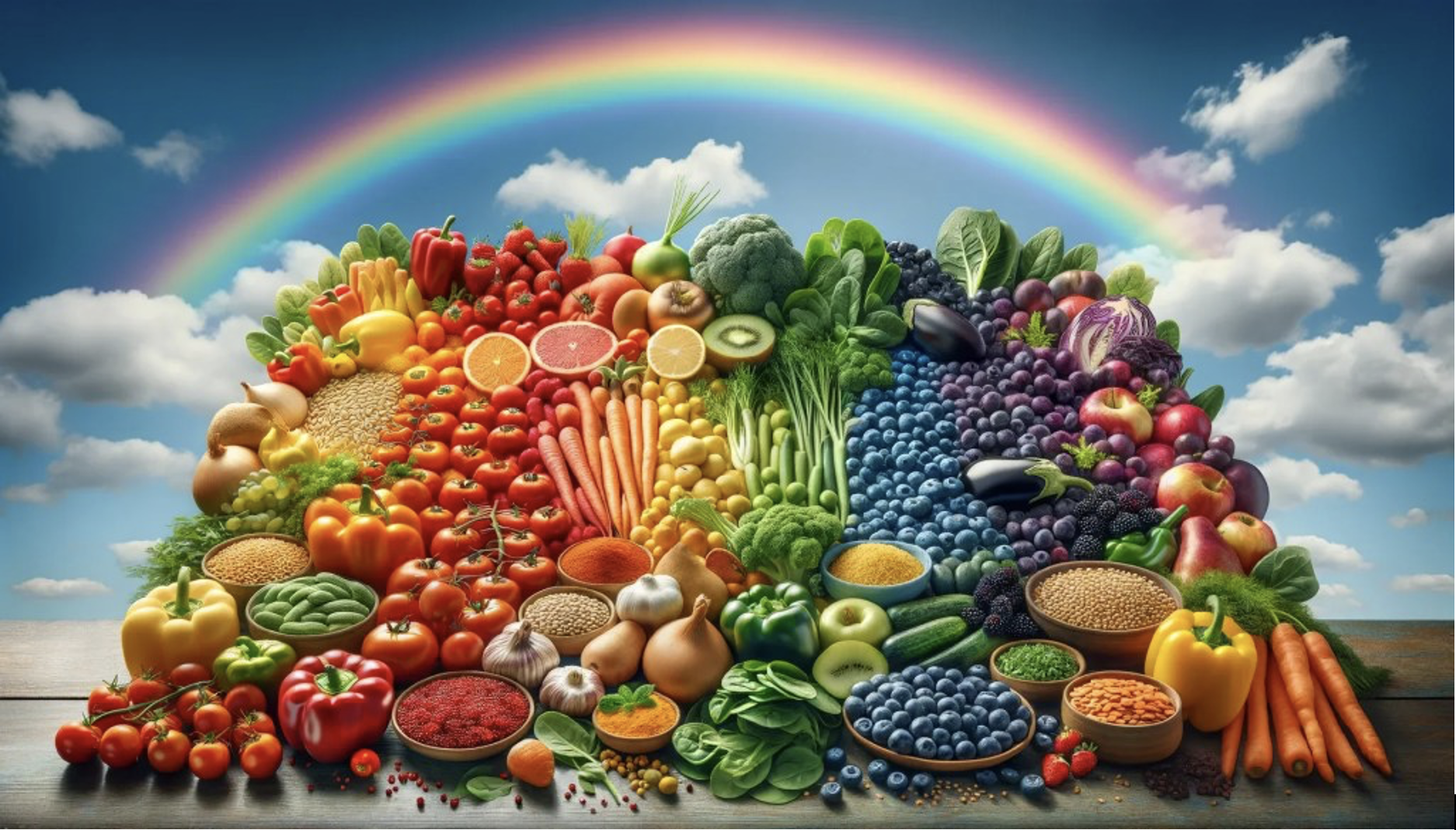Christopher Damman, Associate Professor of Gastroenterology, School of Medicine, University of Washington. Editor in Chief of Gut Bites MD.
Fiber has received a lot of attention recently as a key missing element of our diet. Critical beyond a simple digestive aid, it regulates fundamental aspects of appetite and metabolism through mechanisms involving hormones like GLP-1. But have you wondered what other critical aspects of our diet might be missing? When you hear it is important to ‘eat the rainbow’, what does this mean in practice?
The saying is a simple way to ensure a diversity of plant-based foods in your diet. It guarantees the consumption of a diversity of essential phytonutrients, such as polyphenols that help give plants their vibrant colors, and that happen to be key for our metabolic health.
Natural GLP-1 and Your Microbiome
Polyphenols, similar to fiber, modulate the gut’s synthesis of incretin hormones like GLP-1 that regulate appetite and metabolism – the natural versions of the synthetic analogue drugs for weight loss and blood sugar control recently popularized by Ozempic, Wegovy, and Monjaro.
Also like fiber, the gut microbiome may facilitate the role of polyphenols in metabolic health. While both fiber and polyphenols can stimulate the gut directly to produce hormones, they are also transformed by the microbiome into more potent compounds that can be absorbed deeper into the body and impact metabolic cells, immune cells, and even neurons in the brain.
Urolithin A is one example of a microbiome-created molecule derived from the ellagitannins found in pomegranates. It can be produced by 40% of people with the right microbiome, and has been linked to improved endurance, immune health, and cognitive function.

Antioxidants and Mitochondrial Health
Polyphenols comprise over 8000 different molecules falling into the broad classes phenolic acids, stilbenes, lignans, flavonoids, and tannins. Some polyphenols have gained popular attention like resveratrol from red wine and grapes, anthocyanins from berries and grapes, caffeic acid from coffee, and ECGC from green tea.
They are well known for their anti-inflammatory properties stemming from the fact they tend to be good antioxidants. Antioxidants help protect us from the stress of leaked free radicals generated in the otherwise beneficial glow of a cell’s metabolic “fire”. Like stray sparks from a fireplace, free radicals are quenched by antioxidants before they land on the metaphorical living room rug and start a fire. They effectively protect the body from inflammation. Over time, they can also prevent transformation of healthy cells into cancer cells by preventing damage to the cell’s DNA.
But polyphenols are more than antioxidants. In addition to regulating gut hormones, they can also stimulate the growth and health of mitochondria, which are the cell’s powerhouses for generating energy from food. In doing so they help maintain muscle mass and contribute to the “browning” or transformation of white fat – that fat that stores energy – into mitochondria full beige fat – a type of fat that actually burns calories by producing heat. This essentially means that more energy is converted to heat vs. stored as fat and is one of the reasons why some people can eat more but weigh less.
In Sync with Environment and Food?
So why might plant compounds have such a profound effect on human metabolism? We have evolved alongside plants, which synthesize polyphenols in response to environmental stresses to protect from ultraviolet light, drought, and extreme temperatures.
It is this environmental stress response that is leveraged in growing grapes for wine and how different terroirs, or environmental growing conditions, can have dramatically different flavor profiles due to polyphenol content.
The xenohermesis hypothesis postulates that our body might be taking these environmental clues from plants to best tune our metabolism to changing diets and environments. For example, an increase in heat generating beige fat could have evolutionarily helped prepare our bodies for colder temperatures.

Dystopian Diets
Unfortunately, there is currently a disconnect in this system. Modern plant cultivars vs. wild versions bred for size and appearance, and industrial agricultural growth conditions with high nitrogen content fertilizers have led to lower phenolic content.
With the exception of the coffee, tea, or red wine that some of us drink and the occasional fruits and vegetables we eat, our diet is also increasingly composed of ultra-processed foods, which are largely missing these compounds. Like fiber, they’ve been processed out, and research is showing us that this could be contributing to the rising rates of obesity and diabetes.

Colorful Solutions
It may be surprising to realize that until recently these compounds have not been officially recognized as important for health and indeed it was only in 2022 that the USDA and Academy of Nutrition and Dietetics drafted the very first dietary guideline for a polyphenol.
But it is encouraging to see new commercial and non-profit efforts like Rockefeller’s Periodic Table of Food Initiative that are actively working to catalogue and better understand the contribution of plant compounds to human health.
It is likely the future will see growing polyphenol fortification of foods and replacement of artificial food coloring with these naturally colorful molecules. Indeed what is currently food waste may be upcycled into functional food components. There is also likely to be polyphenol food labeling – in addition to the standard vitamins, minerals, and macronutrients – to help guide consumers on food choice.
In the meantime the solution might simply be to add a diversity of more plants to the diet, with a focus on organically grown plants that can have higher polyphenol levels. Indeed, there might just be better health ‘somewhere over the rainbow’ of colorful gut-healthy plant-based foods. Here’s a resource to help select the healthiest foods.
Christopher Damman, Associate Professor of Gastroenterology, School of Medicine, University of Washington. Editor in Chief of Gut Bites MD.

MD-authored food & microbiome digests and food quality calculator to demystify gut health.


Leave a Reply